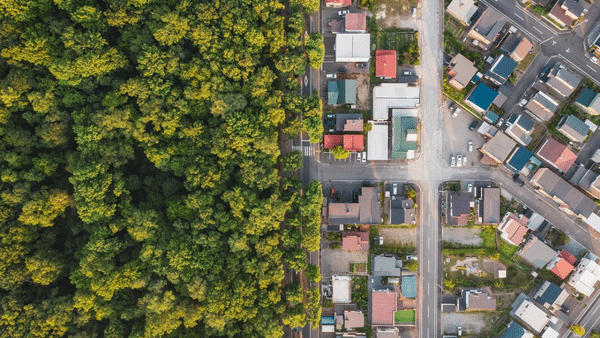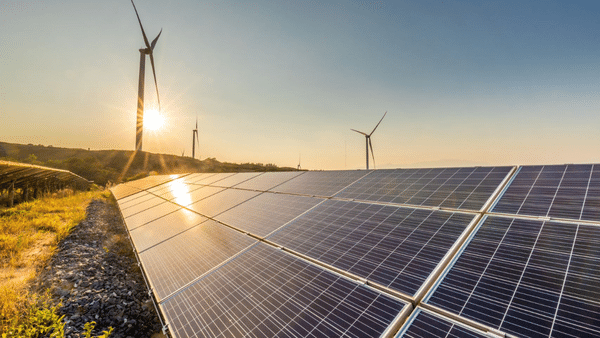A number of new laws will have huge benefits in regreening our towns, increasing biodiversity and helping nature recover from the damage done by humankind. But, argues, Lee Heykoop, we need to make it all happen much more quickly.
We have a biodiversity crisis. And this crisis isn’t only about the flora and fauna caught up in habitat loss and dwindling feeding resources. It’s about us too. In short, the biodiversity crisis is not remote from us, it’s fundamental to us.
I am enthused and cheerful about recent legislation that will affect positive changes. Biodiversity Net Gain (BNG), and in London the Urban Greening Factor (UGF), will make a significant improvement in the design and surrounding spaces of forthcoming building developments.
Meanwhile, existing green open spaces have a means to have their biodiversity improved through the new Nature Recovery Network (NRN) programme.
Both BNG and NRN take a strategic approach to improving biodiversity nationally. And so they should. Yet I wonder if only one kind of strategy was considered – geographical or place strategy. I feel that a temporal strategy for the whole biodiversity crisis has been left out.
The BNG comes into force in the autumn of 2023 (in London the UGF is already in action). The amount of time taken between announcement and legal requirements allows for the development of programmes by Natural England and Defra, to register and monitor where and what claimed improvements actually happen. It also allows time for the upskilling of designers, developer clients, planning authorities and others. Development schemes that must comply with BNG requirements will take between two and 10 years on average to complete. So the years between 2025 and 2033 will see the first early benefits.
Nature recovery and allowing for maturity
Of course, planting needs time to mature. Those year markers then need to be understood as just the beginning of biodiversity development in those locations, a young beginning from which not much can be expected – just as you wouldn’t expect a young child to lift a 10kg weight.
But what about the large majority of land which is not up for development? Can Nature Recovery Networks help here? And can it stimulate changes any sooner? Here too the thinking is spatial, focused on the geography. Government literature says: ‘The NRN will be a national network of wildlife-rich places. Our aim is to expand, improve and connect these places across our cities, towns, countryside and coast.’
The focus is on environmentally protected sites, recovery of threatened species, creation and restoration of wildlife-rich habitat, and woodland. As well as these rural settings, it focuses on those that need supporting in urban environments, those that provide a ‘range of environmental, economic and social benefits, such as carbon capture, flood management, clean water, pollination and recreation’. 2042 is given as the target date.
The Nature Recovery Network has a number of tools at its disposal.
- There is mapping and data, especially Local Nature Recovery Strategies (LNRS), to effectively target action and investment in nature.
- The model is integrative. We have set goals for nature with funding streams, policy and statutory duties that will incentivise the restoration and creation of habitats and help deliver the NRN.
- It is collaborative, as we develop supporting partnerships to use these tools to deliver action for nature.
This outline, the overview, is very encouraging. But the target date of 20 years is not. To address this, we need to approach the project differently, and think in terms of scale.
Time urgency as a strategy
A less linear but nonetheless strategic approach is to address the time urgency, and apply the tools to existing under-performing or failing sites. We have overlooked so many small and medium-sized places in towns and cities for a long time now. Could these be transformed relatively quickly?
I think so. I thought about different types of green open spaces while an associate at Public Practice, working for 12 months at the London Borough of Tower Hamlets regeneration team on opportunities to improve open spaces in the Isle of Dogs and South Poplar. There are plenty of potential pocket parks and potential wildlife strips that were made unappealing and, often, railed off, by a maintenance approach predicated on open spaces as liabilities, to be treated with minimal maintenance input.
Yet we are now appreciating that open spaces are assets. And we’re noticing that management and maintenance approaches, for so long stripped to be cost effective, have hollowed out skills and knowledge throughout the sector. This means there can be no timely solution from existing management and maintenance teams.
The solution, I think, for this small-scale revolution lies in communities. Through supporting partnerships, aiming for a stewardship model where communities are enabled, entering into placemaking and placekeeping, local ‘human capital’ could achieve a great deal. Benefits to people involved in placemaking and placekeeping extend to forging positive community relationships, greater activity, knowledge, and closeness to nature with many associated physical, mental and emotional health and wellbeing benefits. With support from a local authority, these can be transformative not only of the open spaces, but for the people involved with them.
Lee Heykoop is a project manager and landscape architect, with a detailed knowledge of planting and ecology, environmental legislation, planning legislation, community engagement and people. She is a member of the Urban Design Group and the TCPA’s Green Infrastructure Network. She focuses on responding to community needs for improved open public spaces

Become an RSA Fellow
The RSA Fellowship is a unique global network of changemakers enabling people, places and the planet to flourish. We invite you to be part of this change.
Related articles
-
Our yes/no voting system means nothing ever happens
Comment
Peter Emerson
Climate change tells us we must cooperate or die. But where’s the cooperation between political parties? Peter Emerson suggests a radical change.
-
Design for Life: six perspectives towards a life-centric mindset
Blog
Joanna Choukeir Roberta Iley
Joanna Choukeir and Roberta Iley present the six Design for Life perspectives that define the life-centric approach to our mission-led work.
-
Rural and post-industrial perspectives on the just transition
Report
Fabian Wallace-Stephens Emma Morgante Veronica Mrvcic
This report explores how changes to the energy system could impact specific Scottish regions and bring together citizens to collectively imagine better futures.




Be the first to write a comment
Comments
Please login to post a comment or reply
Don't have an account? Click here to register.